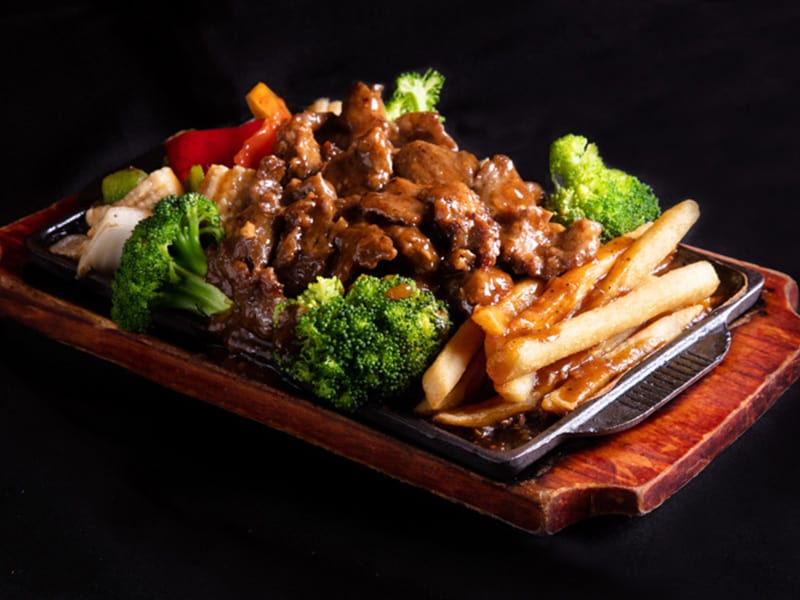
How Chinese Restaurants Are Adapting to the Digital Dining Era
Introduction:
In the fast-paced world of dining, technology has become an integral part of the restaurant experience. From online ordering to digital payment options, customers now expect seamless and convenient services. Chinese restaurants, known for their rich culinary traditions and diverse menus, are also embracing the digital dining era to meet the evolving needs of their patrons. In this article, we'll explore how Chinese restaurants are adapting to the digital landscape and leveraging technology to enhance the dining experience for their customers.
Online Ordering Platforms:
One of the most significant changes in the restaurant industry is the widespread adoption of online ordering platforms. Chinese restaurants have embraced this trend, offering customers the convenience of browsing menus and placing orders from their smartphones or computers. By partnering with third-party delivery services or developing their own online platforms, Chinese restaurants make it easier for customers to enjoy their favorite dishes from the comfort of their homes.
Mobile Apps:
Many Chinese restaurants have developed their own mobile apps to streamline the ordering process further. These apps often feature user-friendly interfaces, personalized recommendations, and loyalty programs to incentivize repeat business. Customers can place orders, track delivery status, and even earn rewards points with just a few taps on their smartphones. Mobile apps also enable restaurants to send targeted promotions and updates directly to customers, enhancing engagement and brand loyalty.

Contactless Payment Options:
In response to the COVID-19 pandemic, contactless payment options have become increasingly popular in restaurants worldwide. Chinese restaurants have implemented technologies such as mobile wallets, QR code payments, and NFC-enabled devices to minimize physical contact between staff and customers. These contactless payment solutions not only enhance safety but also offer added convenience and speed at the checkout counter.
Digital Menu Boards:
Traditional paper menus are gradually being replaced by digital menu boards in many Chinese restaurants. These dynamic displays allow restaurants to update menus in real-time, showcase high-quality images of dishes, and highlight specials or promotions. Digital menu boards can also be integrated with ordering systems, enabling customers to place orders directly from the display, further streamlining the dining experience.
Social Media Marketing:
Chinese restaurants are leveraging social media platforms such as Instagram, Facebook, and Twitter to engage with customers and promote their offerings. Eye-catching food photography, behind-the-scenes glimpses, and interactive content help restaurants build brand awareness and attract new customers. Social media also provides a platform for restaurants to gather feedback, respond to customer inquiries, and cultivate a loyal online community.
Virtual Cooking Classes and Demonstrations:
Some Chinese restaurants have begun offering virtual cooking classes and demonstrations as a way to connect with customers beyond the dining room. These interactive experiences allow participants to learn authentic cooking techniques, explore new recipes, and gain insights into Chinese culinary traditions. Virtual cooking classes not only generate additional revenue but also foster a sense of community and culinary education among participants.
Integration of AI and Data Analytics:
Advancements in artificial intelligence (AI) and data analytics are revolutionizing the restaurant industry, and Chinese restaurants are no exception. By analyzing customer data and preferences, restaurants can tailor menu offerings, pricing strategies, and marketing campaigns to better meet the needs of their target audience. AI-powered chatbots and virtual assistants also provide personalized recommendations and assistance to customers, enhancing the overall dining experience.

Delivery Optimization:
Efficient delivery operations are essential for Chinese restaurants catering to the growing demand for takeout and delivery orders. Many restaurants are investing in delivery optimization technologies, such as route planning software and GPS tracking systems, to ensure timely and accurate deliveries. Some restaurants even employ drones or autonomous vehicles for contactless delivery in urban areas, further enhancing efficiency and customer satisfaction.
Conclusion:
In the digital dining era, Chinese restaurants in Sugar Land are embracing technology to meet the evolving expectations of their customers. From online ordering platforms to contactless payment options and virtual cooking classes, these restaurants are leveraging a variety of digital tools to enhance convenience, safety, and engagement. By embracing innovation and staying ahead of technological trends, Chinese restaurants are well-positioned to thrive in an increasingly digital world.
Related Courses and Certification
Also Online IT Certification Courses & Online Technical Certificate Programs

